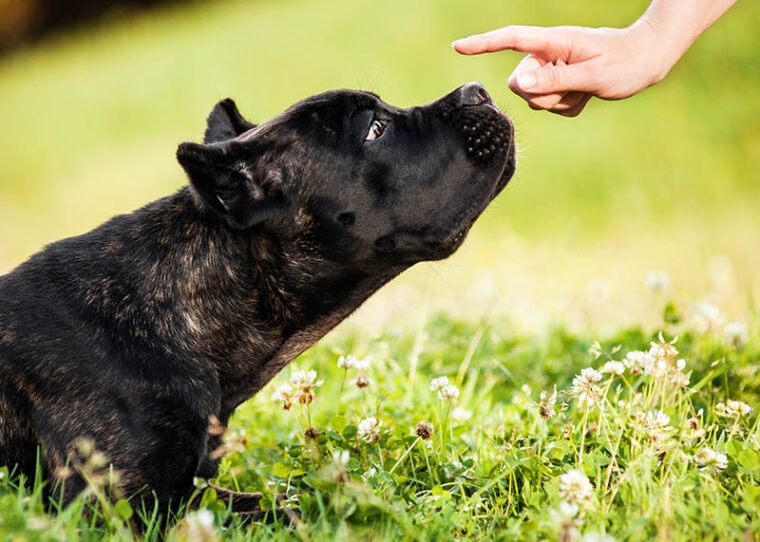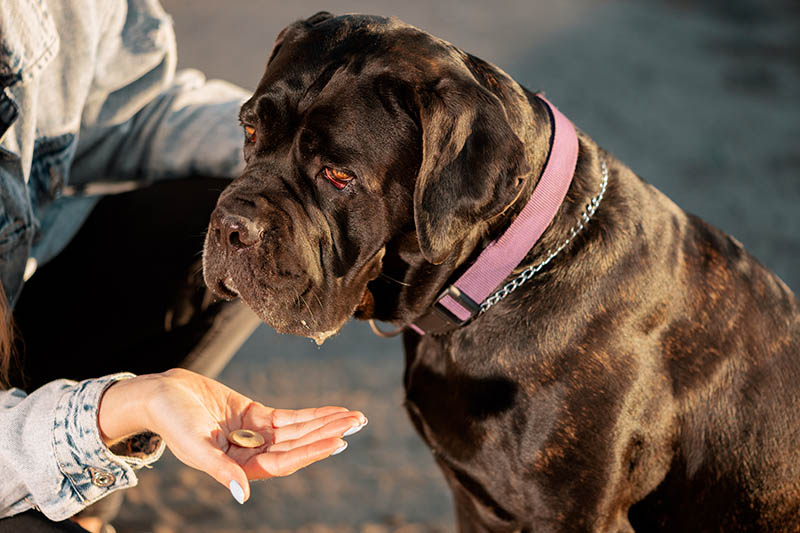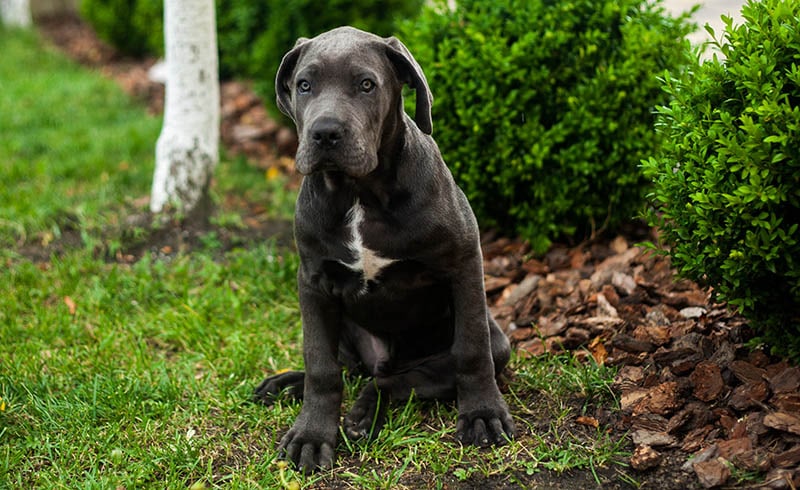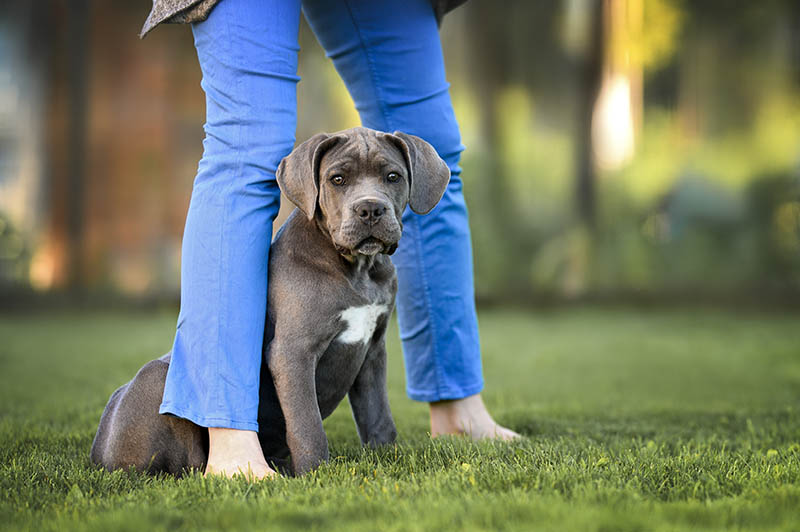[ad_1]

Cane Corso puppies are the sweetest things ever. Those droopy eyes, paws too big for their bodies, and floppy ears—what’s not to love?
However, that tiny pup will quickly grow up to be a large, powerful dog with a bite force stronger than a lion’s.1 Add their dominant nature and protective instincts, and you’ve got a dog that requires serious training to blossom into an amazing companion.
The good news is that Cani Corsi (plural) are extremely smart and trainable. They’ve been bred to work alongside humans, and wanting to please their owners is in their DNA.
So now, it’s up to you! In this article, we’ll walk you through the basic steps of training your new buddy, starting with how to prepare for it.
Get Ready for Training
Training your Cane Corso begins before you bring them home. You’ll want to set them up for success, and that includes:
The 6 Expert Tips For Training a Cane Corso
Once the basics are done, it’s time for the fun part. Get your training sessions off to a great start using these tips:
1. Use Positive Reinforcement Techniques

Reinforce good behaviors by rewarding your puppy when they do something right. You can use treats, praise, pets, or toys—whatever gets him excited the most!
Make sure to reward them the moment they successfully complete a task. This way, they associate the act with the reward, so they’re more likely to do it again.
Use negative reinforcement sparingly (if at all). Punishment will only make your dog less likely to cooperate in future training sessions.
2. Crate Train Your Cane Corso From Day One
Some dog owners feel guilty about crating their dogs, but don’t be. Provided you teach them that the crate = awesome things, it actually offers lifelong benefits to both of you.
For instance, it gives them a safe place to retreat when they feel scared or anxious. Dogs are den animals by nature, so they feel most secure in small, dark spaces—like the inside of a crate.
The crate also makes it easy to contain your dog as needed, such as when you’re not home, when guests are over, or when you need to take them somewhere. It can even speed up the potty-training process because dogs don’t like eliminating where they sleep!
To start crate training, put your puppy inside with some toys and treats. Leave the door open while they get used to their new surroundings. After a few days, try closing the door for a few minutes and then opening it again. Repeat this process until your puppy is comfortable staying in the crate for longer periods of time.
3. Be Consistent with Potty Training

Potty training your Cane Corso is easier than you probably think. The most important ingredient? Consistency.
Keeping your puppy on a strict schedule will help you predict when they need to go out and prevent accidents. You also need to be consistent with their potty area, so they don’t get confused about the “correct” place to go.
Finally, factor in your puppy’s age during training. As a general rule, puppies can only hold their bladder for about one hour per month of age. So, if your pup is four months old, they can hold it for four hours before needing to relieve themselves.
As for how to potty train your Cane Corso, follow these steps:
Repeat the process every day—your dog will be housebroken before you know it!
4. Take Obedience Training Seriously
Obedience training is more than just teaching your dog some cool tricks. It’s a communication tool, a way to build a stronger bond with your dog, and lays the foundation for a lifetime of good behavior.
Start with the basics: sit, come, stay, down, and leave it. These are the building blocks of more advanced commands, such as place, recall, and heel.
As for the training sessions, keep them short and fun! Spread several 5–10-minute sessions throughout the day, and try to practice every day. Consider attending a puppy class to get a feel for what obedience training looks like—or better yet, work with a professional trainer for guidance.
5. Socialize Your Cane Corso Early & Often

Socialization will help build your Cane Corso’s confidence and help them become a well-adjusted dog.
By “socialization,” we don’t mean letting your pup loose at the nearest dog park. Socializing your dog means exposing them to as many different people, animals, and situations as you can. This includes making sure that each and every interaction is a positive one.
Get started using these tips:
A well-socialized Cane Corso will be easier to train, more comfortable around other people and animals, less likely to bite or become aggressive, and overall, a better companion.
6. Build Physical & Mental Exercise Into Their Routine
Cane Corsos are active and energetic dogs. They need a way to burn off that energy, or you will have a destructive and frustrated dog on your hands. And that kind of dog won’t be very receptive to training.
Schedule at least one long walk a day, and play with your dog often. Exercise their brain with puzzles, stuffed Kongs, and other interactive toys that will challenge them to figure things out. If you’re not home much during the day, consider hiring a dog walker or pet sitter to give your dog some exercise and social time.
Conclusion
Training your Cane Corso will take time, patience, and consistency. But as long as you’re willing to put in the work, you’ll eventually end up with a loyal, obedient, and loving dog who will bring so much joy into your life. Have fun and enjoy!
Featured Image Credit: Ksenia Raykova, Shutterstock


